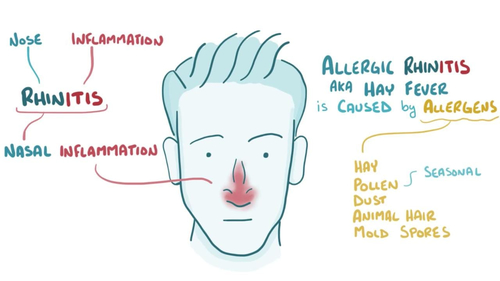Pollen is one of the most common causes for allergic reactions in humans. When pollen particles are inhaled, the body becomes hypersensitive to them and releases histamine to counteract the effects of the pollen. The symptoms of allergies to pollen include skin rashes, hives, and swelling of the airway. Asthma can also be developed from exposure to pollen. There are other conditions that can be made worse by exposure to certain types of allergens.
Allergic reactions can range from mild to severe. The symptoms can appear right away or over time, depending on the allergen. If the allergic reaction is delayed, it may not cause any serious side effects. However, if an allergic reaction is treated quickly and appropriately, it can result in the avoidance of further damage to the body and can even result in preventing the development of further allergies.
When dealing with symptoms of allergies to pollen, you should identify those factors that you are allergic to and avoid them. Pollen is a very common allergen. It can float through the environment and be inhaled by individuals. Individuals cannot avoid this allergen, but they can find ways to reduce its presence. There are various methods to use to decrease its presence, such as decreasing exposure to the allergen, using antihistamines to calm the immune system, running a dehumidifier in the home, using anti-allergy medications to help reduce the symptoms of allergies, using a pollen-free mattress cover, and using decorative pillows to alleviate runny nose.
Other symptoms of allergies to pollen are from animal dander and tree nuts. Animal dander is the residue remaining after the removal of a bird's feather. Dander can remain on the body and trigger allergies in some individuals. Tree nuts include walnuts, hazelnuts, and cashews and can also cause an allergic reaction.
Allergic reactions can be a cause of concern for asthmatics. They can cause wheezing, chest tightness, difficulty breathing, and swelling of the airways. Asthma can be aggravated by any of these symptoms of allergies to pollen. To relieve these symptoms of allergies to pollen, it is important to control exposure to the allergen. Using an air filter in the home and avoiding areas that are highly polluted and dust filled are two good strategies to reduce exposure to allergens.
Other symptoms of allergies to pollen are from inflammation of the lungs and sinus areas. This type of inflammation will result in coughs that will not clear up with normal coughing treatments. If left untreated, these types of reactions can lead to infections of the lungs and sinuses. These infections can become life threatening if left untreated. Medicines prescribed by a doctor or over-the-counter medicine is available for the treatment of these infections.
For additional tips on handling symptoms of allergies to pollen, it is recommended to seek the advice of an expert before starting any home remedies or over-the-counter medicines. Individuals should also be aware that although some of these medications may provide temporary relief of symptoms, there is no proven medical cure for allergies and the recurrence rate for these types of reactions is high. Additional home remedies that can help relieve and cure allergies are herbal teas, which can be helpful in the relief of symptoms of allergies to pollen. Taking a warm, calming tea can help relax the body and mind and can also ease symptoms of these allergies.
Allergies to pollen can be controlled if not cured. A healthy lifestyle, diet, exercise, and avoidance of substances and foods that can trigger an allergic reaction are the most important steps to take to avoid experiencing symptoms of allergies to pollen. Using an air purifier is also one great way to control the amount of pollutants in the air and the level of allergy symptoms you experience. Lastly, avoiding the irritants and allergens in the air can prevent or reduce the occurrences of asthma attacks, wheezing, sneezing, and coughing.
